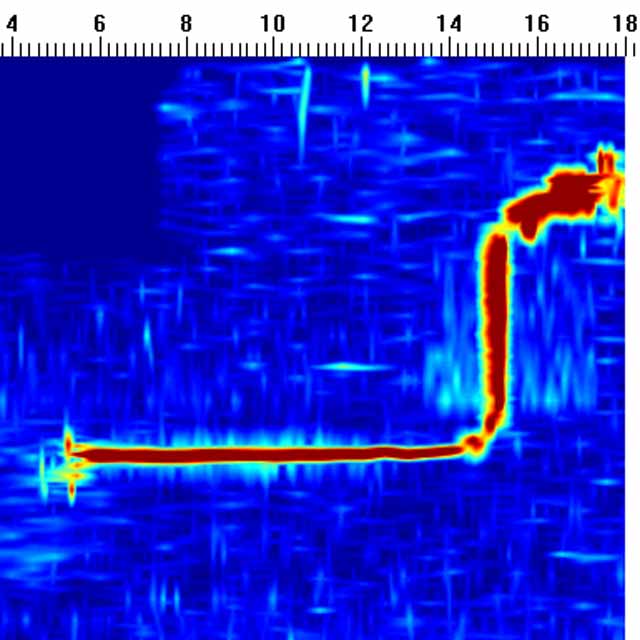Concrete Scanning and Imaging Services for Your Project
Wiki Article
Past the Surface area: Unraveling the Keys of GPR Scanning for Concrete Applications
Are you ready to dive deeper into the globe of GPR scanning for concrete applications? Discover the fundamentals of GPR scanning, discover exactly how it works, and check out finest methods for carrying out scans on concrete surface areas.The Fundamentals of GPR Scanning for Concrete Applications
GPR scanning is frequently made use of to analyze the problem of concrete frameworks. You can conveniently unwind the tricks that exist underneath the surface area of the concrete when you utilize GPR scanning. It offers you with valuable information concerning the interior framework of the concrete and assists you determine any possible concerns or flaws.With GPR scanning, you can rapidly and non-destructively identify the thickness of the concrete slab and situate any type of voids or delaminations within it - Concrete Scanning and Imaging. This information is crucial for reviewing the architectural integrity of the concrete and planning any kind of needed repair work or upkeep
Additionally, GPR scanning permits you to discover the existence of reinforcing steel bars, additionally understood as rebar, within the concrete. This is important for assessing the stamina and sturdiness of the structure, as well as for ensuring appropriate construction techniques were followed.
Additionally, GPR scanning can discover the presence of dampness or water infiltration within the concrete. This is specifically essential as dampness can result in deterioration of the strengthening steel, which can endanger the architectural integrity of the concrete gradually.

Comprehending the Innovation Behind GPR Scanning
To recognize just how it functions, you require to comprehend the innovation behind GPR scanning. Ground Permeating Radar (GPR) is a non-destructive screening technique that makes use of electro-magnetic waves to identify subsurface things and attributes. It contains 3 primary parts: a control device, an antenna, and a display screen device. The control system sends high-frequency radio waves into the ground through the antenna. When they run into adjustments in the subsurface products, these waves then bounce back. The antenna obtains the reflected waves and sends the data back to the control system. The control system processes this information and presents it on the screen of the display system.GPR scanning operates on the concept of time travel. The control device determines the time it considers the waves to travel to the subsurface and recover. By examining the time and strength of the shown waves, GPR can determine the deepness and location of items within the concrete. Different products have unique electromagnetic homes, which affect the method the waves are mirrored. This enables GPR to distinguish between concrete, rebar, gaps, and other subsurface attributes.
Ideal Practices for Conducting GPR Checking on Concrete

Analyzing GPR Scanning Results for Concrete Applications
Once you have conducted the GPR scans on the concrete, it's time to evaluate and translate the outcomes to get beneficial understandings. The analysis of GPR scanning results is an essential step in recognizing the problem of the concrete and recognizing any kind of possible concerns.Along with recognizing flaws, the analysis of GPR results can also help determine the density and make-up of various concrete layers. By examining the representations and diffractions in the GPR data, you can estimate the depth and thickness of different layers, such as the concrete cover, reinforcement, or any other ingrained components. This details is essential for assessing the top article structural integrity of the concrete and intending any kind of essential repair service or maintenance work.

Advanced Methods for GPR Scanning in Concrete Evaluation
By making use of innovative strategies, you can boost the precision and resolution of GPR scans for examining concrete structures (Concrete Scanning and Imaging). One such strategy is called more helpful hints multi-frequency GPR scanning. Generally, by using these advanced strategies, you can considerably improve the performance of GPR scanning in examining concrete structures.Verdict
So there you have it - the secrets of GPR scanning for concrete applications have actually been unraveled. Now that you recognize the fundamentals of this modern technology and how it functions, you can with confidence conduct GPR scanning on concrete structures.Discover the fundamentals of GPR scanning, find out how it functions, and discover best methods for conducting scans on concrete surfaces. When you utilize GPR scanning, you can conveniently unwind the secrets here that lie underneath the surface area of the concrete. The interpretation of GPR scanning results is an essential step in recognizing the problem of the concrete and determining any type of potential concerns. Overall, by using these sophisticated strategies, you can greatly improve the efficiency of GPR scanning in examining concrete frameworks.
Currently that you comprehend the essentials of this modern technology and exactly how it works, you can confidently carry out GPR scanning on concrete frameworks.
Report this wiki page